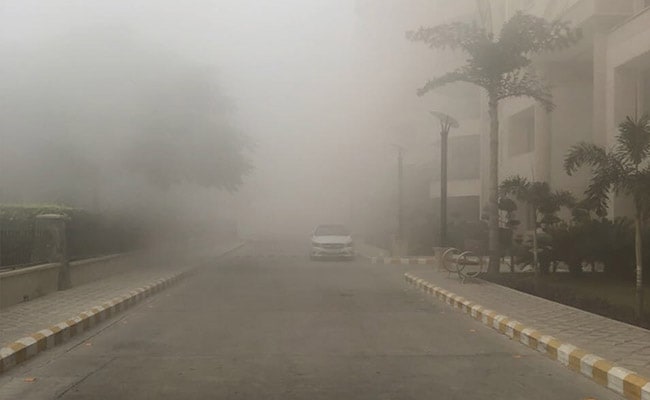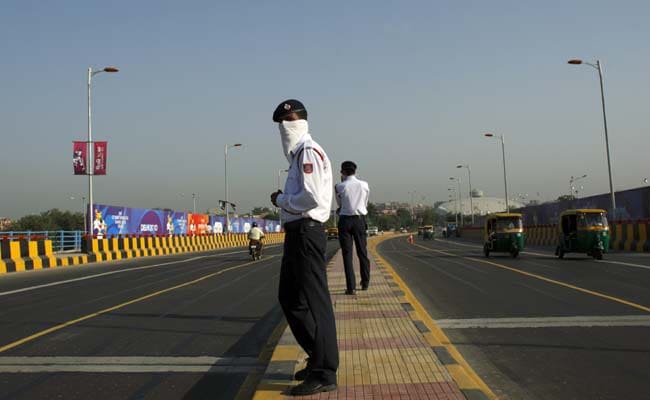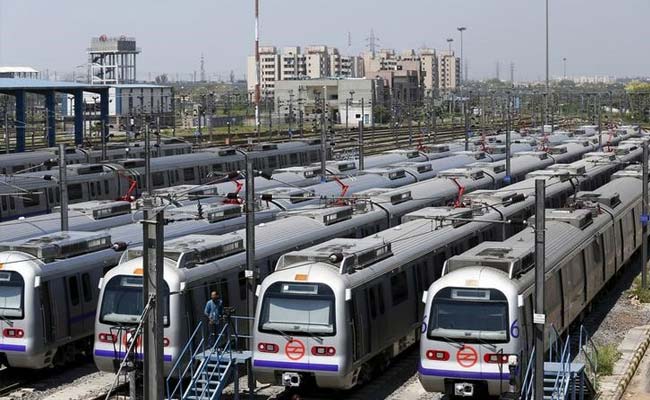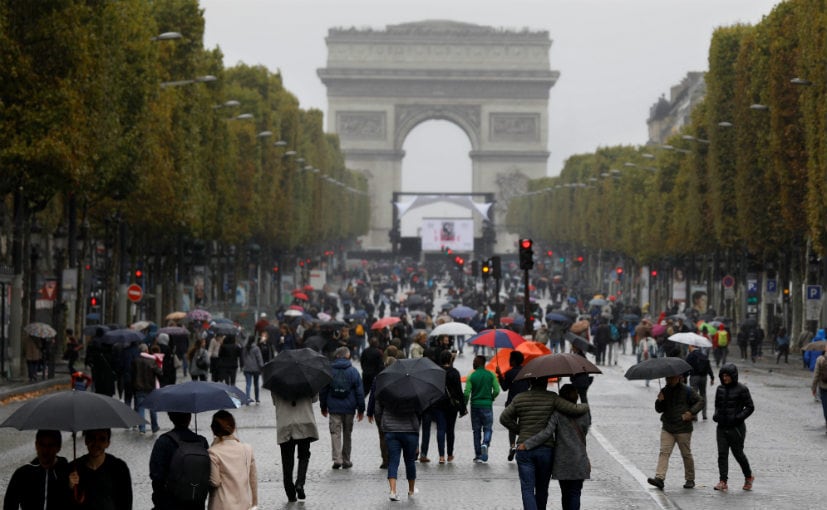Odd-Even Rule: 5 Things You Need to Know

- Odd-Even Scheme Returns from November 13 to November 17, 2017
- Two-wheelers, women drivers with children, electric/hybrid cars exempt
- Delhi traffic police will apply Rs.2000 fine to cars not complying
Pollution in Delhi is out of control prompting a health emergency and to counter that, the state government has brought the odd-even rule back. The odd-even rule will be rolled out from November 13 to November 17, 2017 in an attempt to reduce pollution in the nation's capital, albeit a little too little too late. The odd-even rule will mean that cars running with number plates ending in odd numbers like 0,2,4,6,8 will be allowed to run on November 14 and November 16. On the other hand, cars with number plates engine in odd numbers like 1,3,5,7 and 9 will be allowed to run on November 13, November 15 and November 17. As with the odd-even rule before, certain cars/vehicles and certain drivers will be exempt from the odd-even rule this time around too. Read on to know the top 5 things you need to know about the odd-even rule!
Also Read: Odd-Even Plan Called Off For Now By Delhi Government

(Two Wheelers have been exempted from the odd-even scheme)
Vehicle Exceptions
The odd-even scheme might have been successful in bringing traffic down substantially, but the government has announced a whole range of exceptions that will be applicable for these days irrespective of the number plate that these cars are fitted with. The exceptions include all ambulances, hybrid and electric vehicles, VVIP and embassy vehicles. Vehicles running on CNG will also be exempt from the odd-even rules. However, this time around, there will be no exception for two-wheelers, which too have to follow the odd-even rule.

(Women drivers with no male passengers under age 12 are exempt from odd-even rule)
No Exceptions For Women
The Delhi government has also announced that this time it will not be exempting women drivers from following the odd-even plan as the Green Court questioned the logic behind the same.
Also Read: No Exemption for Women And Two-Wheelers During Odd-Even Scheme

(Delhi Traffic Police will issue a Rs 2000 fine for cars not complying with the odd-even scheme)
Odd-Even Fines
Vehicles not complying with the odd-even scheme will be heavily fined in Delhi. The government has announced a steep Rs 2,000 fine for any and all vehicles that have not been exempted and are yet running on the road on days that they are not allowed. The fines will be collected on the spot so as to avoid vehicle impounds. In the last running of the odd-even scheme, the Delhi government challaned an average of about 1000 vehicles a day for the first few days. The figure later was lower as there was a lot more compliance with the rules.

(Delhi Metro Will increase train services during odd-even scheme)
Public Transport
From November 13 to November 17 when the odd-even scheme kicks in, public transport solutions in Delhi will be critical in order to keep day-to-day operations smooth. In order to counter the higher flow of people who will opt for public transport, the Delhi Metro Rail Corporation (DMRC) has already increased the frequency of trains. This increased frequency will run through the odd-even week too. The Delhi Metro will now be running 3317 train trips instead of the standard 3131.

(The DTC will approach private bus operators to run buses for public transport)
The Delhi Transport Corporation too will kick it into high gear with more buss services. The DTC fleet is currently at a 7-year low at just under 4000 buses and although a proposal to add an additional 1000 buses got cabinet approval from the state government just a few months ago, tenders for the same have yet to be floated. So as to not inconvenience passengers, the DTC will in turn reach out to private bus operators, which the corporation will pay on per kilometre basis. Although the additional services will ease passenger trouble on the odd-even days, it will however add substantially to air pollution as most of these buses run on diesel engines.

(Paris Car-Free Day)
Photo Credit: Reuters
Odd-even Internationally
India is not the only country to run the odd-even scheme. The scheme was run successfully in Beijing in 2008 and then subsequently in other countries too. France and Italy have been on the forefront in Europe with cities like Paris, Rome, Milan and Florence strictly enforcing the odd even scheme to curb both traffic and air pollution. In South America too, cities like Mexico City and Bogota have used the odd-even scheme in the past to ease pollution and congestion. That said, every odd-even scheme has yielded the exact same result. Although it is effective in the short term, it is not a long term solution as it usually results in people opting to buy a second car with an odd or even number depending on the other car they own.
Trending News
 1 min readYamaha YZF-R2 Name Trademarked In India
1 min readYamaha YZF-R2 Name Trademarked In India
Latest News
 car&bike Team | Dec 22, 2025KTM 390 Adventure X, 390 Enduro R Recalled Over Side Stand IssueKTM has issued a global recall for select 390 models after identifying a side stand spring failure caused by engine vibrations.2 mins read
car&bike Team | Dec 22, 2025KTM 390 Adventure X, 390 Enduro R Recalled Over Side Stand IssueKTM has issued a global recall for select 390 models after identifying a side stand spring failure caused by engine vibrations.2 mins read Carandbike Team | Dec 22, 2025Tata Harrier, Safari Petrol Variant Details Revealed: Get New Range Topping Ultra TrimThe much-awaited petrol variants of the Harrier and Safari are powered by a more powerful iteration of the 1.5 turbo-petrol engine from the Sierra.1 min read
Carandbike Team | Dec 22, 2025Tata Harrier, Safari Petrol Variant Details Revealed: Get New Range Topping Ultra TrimThe much-awaited petrol variants of the Harrier and Safari are powered by a more powerful iteration of the 1.5 turbo-petrol engine from the Sierra.1 min read Jaiveer Mehra | Dec 21, 2025New Limited-Run Ducati Panigale V4 Marquez 2025 World Champion Replica RevealedSpecial edition Panigale V4 commemorates Marc Marquez's 2025 MotoGP Rider’s title.1 min read
Jaiveer Mehra | Dec 21, 2025New Limited-Run Ducati Panigale V4 Marquez 2025 World Champion Replica RevealedSpecial edition Panigale V4 commemorates Marc Marquez's 2025 MotoGP Rider’s title.1 min read car&bike Team | Dec 21, 2025KTM To Host First Adventure Rally In India In Feb 2026KTM also announced a third season of its KTM Cup for India, which commences in January 2026.1 min read
car&bike Team | Dec 21, 2025KTM To Host First Adventure Rally In India In Feb 2026KTM also announced a third season of its KTM Cup for India, which commences in January 2026.1 min read car&bike Team | Dec 20, 2025KTM 390 Adventure R To Be Launched In January 2026Bookings for the KTM 390 Adventure R are expected to open very soon, wit deliveries beginning in January 2026.2 mins read
car&bike Team | Dec 20, 2025KTM 390 Adventure R To Be Launched In January 2026Bookings for the KTM 390 Adventure R are expected to open very soon, wit deliveries beginning in January 2026.2 mins read car&bike Team | Dec 20, 2025BMW Motorrad India To Hike Prices By Up To 6 Per Cent From 2026The price hike will come into effect from January 1, 2026, and will be across the range of BMW two-wheelers and is due to the rupee’s sharp depreciation.1 min read
car&bike Team | Dec 20, 2025BMW Motorrad India To Hike Prices By Up To 6 Per Cent From 2026The price hike will come into effect from January 1, 2026, and will be across the range of BMW two-wheelers and is due to the rupee’s sharp depreciation.1 min read
 Seshan Vijayraghvan | Dec 22, 20252026 Tata Harrier & Safari 1.5 Hyperion Review: By The Power Of Petrol!The new Tata Harrier and Safari petrol packs a new 1.5-litre TGDI Hyperion engine, but is it an ideal alternative to the diesel version?7 mins read
Seshan Vijayraghvan | Dec 22, 20252026 Tata Harrier & Safari 1.5 Hyperion Review: By The Power Of Petrol!The new Tata Harrier and Safari petrol packs a new 1.5-litre TGDI Hyperion engine, but is it an ideal alternative to the diesel version?7 mins read Bilal Firfiray | Dec 19, 2025Maruti Suzuki e-Vitara Review: Worth The Wait?After a long wait, the first-ever electric Maruti Suzuki is here. It’s the e-Vitara, and it comes with a few promises. But arriving this late, is it worth the wait? Or is it a case of too little, too late?9 mins read
Bilal Firfiray | Dec 19, 2025Maruti Suzuki e-Vitara Review: Worth The Wait?After a long wait, the first-ever electric Maruti Suzuki is here. It’s the e-Vitara, and it comes with a few promises. But arriving this late, is it worth the wait? Or is it a case of too little, too late?9 mins read Bilal Firfiray | Dec 18, 2025Mercedes-Benz G450d: The Subtle Power of EvolutionThe Mercedes-Benz G 450d evolves subtly with more power, improved efficiency, and modern tech, while staying true to the timeless G-Class design. And character.4 mins read
Bilal Firfiray | Dec 18, 2025Mercedes-Benz G450d: The Subtle Power of EvolutionThe Mercedes-Benz G 450d evolves subtly with more power, improved efficiency, and modern tech, while staying true to the timeless G-Class design. And character.4 mins read Janak Sorap | Dec 11, 2025Harley-Davidson X440 T First Ride Review: Smarter and SharperHarley-Davidson has taken the X440 and given it a more focused and engaging twist. The result is the X440 T—essentially the same platform but updated in areas that give the motorcycle more appeal and riders more thrill.5 mins read
Janak Sorap | Dec 11, 2025Harley-Davidson X440 T First Ride Review: Smarter and SharperHarley-Davidson has taken the X440 and given it a more focused and engaging twist. The result is the X440 T—essentially the same platform but updated in areas that give the motorcycle more appeal and riders more thrill.5 mins read Shams Raza Naqvi | Dec 10, 20252025 Mini Cooper Convertible Review: More Colour On Indian RoadsThe updated Mini Cooper Convertible is set to be launched in the Indian market in the next few days. We drive it around Jaisalmer for a quick review.5 mins read
Shams Raza Naqvi | Dec 10, 20252025 Mini Cooper Convertible Review: More Colour On Indian RoadsThe updated Mini Cooper Convertible is set to be launched in the Indian market in the next few days. We drive it around Jaisalmer for a quick review.5 mins read






























































































































